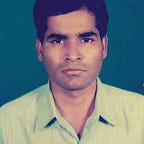AI-Generated Film: The Next Phase in Movie Making
A.I. Can Create Video Game, Music, Screenplays, Novel and Poetry — And The Next a Movie Custom-Built To Individual Viewer.
Machine learning and artificial intelligence algorithms can be utilized to create new scripts or write synopsis and characters for movies. Additionally, AI can be used to analyze individual scripts that will be produced into a movie. Now that AI is already there in the movie making business and the question is how much more it will infiltrate Film-making and Screenwriting.
Sunspring is a 2016 experimental science fiction short film entirely written by an artificial intelligence and is directed by Oscar Sharp. This short film, made as an entry to Sci-Fi London’s 48-hour film-making competition in 2016, was written entirely by an AI and the movie had to be produced inside 48 hours, and adhere to specific guidelines. The director, Oscar Sharp, fed a few hundred sci-fi screenplays into a long short-term memory recurrent neural network (the type of AI software) mostly movies from the 1980s and 90s, and then told it to write its own. The result was inspiring, but not perfect.
Things have moved on since Sunspring in 2016. In 2018, Kevin Macdonald ( Oscar-winning director) directed a one-minute advertisement for Lexus entirely written by an AI — that had been trained on 15 years’ worth of luxury ads.
GPT-3 (Generative Pre-trained Transformer 3) is an autoregressive language model that uses deep learning to produce human-like text. GPT-3 was trained on hundreds of billions of words. For instance, the revolutionary GPT-3 model can write articles that make majority of readers into thinking it’s human, it can write poetry, song lyrics, memes, news articles and the list goes on. It’s very good at writing “amazingly coherent text” with only a few simple prompts.
Taking clue from GPT-3 model, we are looking at a future scenario where movies are personally custom-built to individual viewers as and when required, and we might be approaching a sort of crucial test for machine-written and directed movies. Maybe using an algorithm that can generate a video simply by consuming a (very short) script as viewers input with its user-friendly interface, clients( Individual Viewers and Movie Makers) can play with the variables, options, choices and assess the end-result or impact of a movie on box office. During this process, the software evaluates its performance after each attempt, and feedback circulates through the millions of network connections to refine future computations or outcomes and when this happens, the masses will begin celebrating computer-created movie as per their preference.
In order to create a movie on demand or make a movie as per viewer’s choice, we need to implement AI algorithms comprising of Deep Neural Networks( DNNs ) which in some sense work in a similar way to the human brain and designed to mimic how humans handle the entire movie making process — from script to final edit. The “depth” comes from the many layers in the network — as the information goes deeper into the network. The first algorithm that can generate a video simply by consuming a (very short) script given by the user. The next is given a single movie frame, predict the next series of frames and this part of AI is built using a LSTM recurrent neural network. The movies that were required to be fed to the deep neural network are mostly from the old batch and the AI then put the film together using thousands of hours of old movie footage . After a period of time, The AI learns to predict which letters and words follows each other and the AI manages to structure together a screenplay including the dialogues. Face swapping is also prevalent throughout the movie making to make new face image and Generative Adversarial Networks are used to assist with the face-swapping feature. The AI utilizes Dilated Convolutional Neural Networks for generating music. The types of technology used in movie making include natural language processing, facial recognition, image processing, music composing and voice-generating technologies, and predictive algorithms ( next words, frames, etc. ) and concatenating the output of these varied networks to put the AI-generated film together frame by frame. While AI generated film making is still in research stage, there is no DNN based machine learning technique available as on date that can make a perfect movie.
AI is proving that it can write a script and AI is also proving that it can edit scenes. The AI revolution will clearly benefit film-makers. In other words, Warners may be using AI to help it decide what movies to make. Within next few years’ time, we may see Netflix employing intelligent algorithms to source stories, use CGI(Computer-generated imagery), and edit films.
As Artificial intelligence is moving into movie production and develops a creative work of its own, the AI may deliver a movie with artistic excellence. The movies so far made by AI are far from perfect, but an improved technique could one day find uses in AI-created work both inside and outside entertainment industry. However, The downside of this is loss of highly influential celebrities, script writers, directors, etc. involved in the movie making business and we may not even need actors anymore if the AI can put the film together using thousands of hours of old movie footage. Presently, AI-created work is not up to the mark but it’s clearly getting better and over time it may create excellence in movie making.
